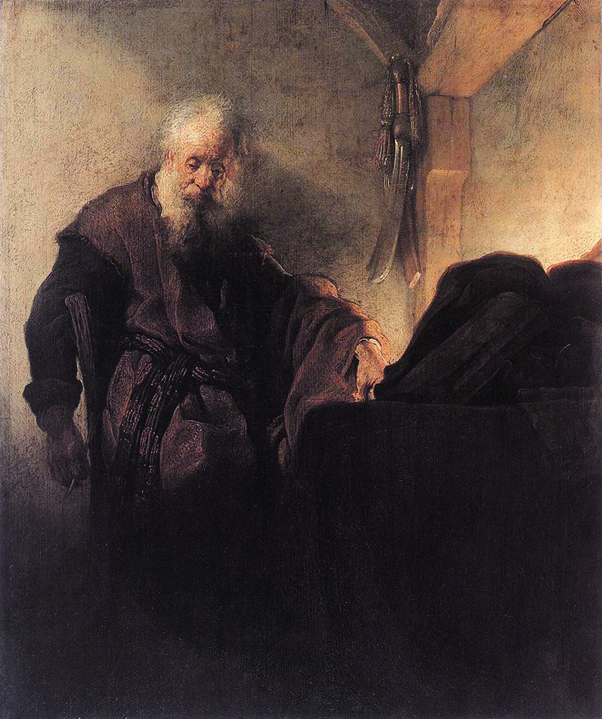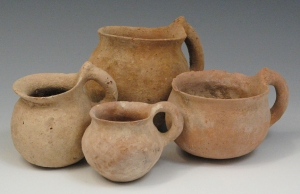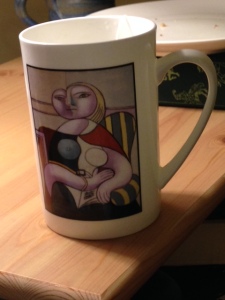There are days I don’t feel like much. I’ve never been much possessed of a sense of my own strength or ability or beauty. I have days of introspection and self doubt. But it was in such a period recently that I stumbled upon Paul’s words in his second letter to the church of Corinth, ‘But we have this treasure in jars of clay…’ (2 Corinthians 4:7) They’re words I’ve kept on returning to.
There’s a painting of Paul I love; a Rembrandt. It’s a beautiful piece. It might be my favourite painting. Paul the Apostle sits at his writing desk penning part of the New Testament. Pen arm slung over the back of his chair, he seems to be contemplating what to write down next.

Saint Paul at his Writing-Desk Wikipedia
The composition is perfect, the play of soft light and shadow is masterful as is, above all, Rembrandt’s sensitivity to capture the heart and soul of someone in their face and posture. Rembrandt’s love affair with brown doesn’t always pull off but here it’s just right. But a confession: although I always thought of it as a lovely picture itself I didn’t, until recently, really think it quite worked as a picture of Paul. Paul the intrepid traveler, crossing dangerous terrain and seas to spread the message of Jesus, shipwrecked, attacked, jailed is, in my mind, a fiery, steely eyed bull dog of a man who fought hard. Here though he looks, to be honest, like he’s just about had it. Maybe Rembrandt foisted his own particular glumness onto him.
But as I’ve chewed over those words of his I’ve wondered if it hasn’t actually been me who’s brought my own assumptions and laid them over Paul. There would’ve been plenty of days Paul would’ve felt just like this. He doesn’t describe himself as a bull dog but as a clay jar.
Clay is wonderful stuff. I remember at uni discovering the joy of working with it. It’s a warm and intimate material. It can be shaped into whatever you want. I have a friend who makes really lovely and meaningful objects with clay. I like it.

But clay isn’t fancy. Part of the joy of working with clay is its messy tactility – for the childlike part of you that never quite got over playing in the mud. Clay isn’t that far removed from soil, really. Maybe Paul had in mind God’s creation of humanity from dirt in Genesis 2:7, ‘Then the Lord God formed a man from the dust of the ground…’ It certainly isn’t gold or diamonds. It’s easy to come by and cheap. As I pondered all this and thought of buying a little clay jar to sit on my desk as a reminder of it all it struck me that my house and garden are full of clay vessels. A shelf in a kitchen cupboard is packed with mugs. All sorts. There’s a few lovely hand made gifts but most are mass produced $2 gear. On the other side of the kitchen are a couple of shelves of multiple sets of plates. Outside, my little cactus sits in a tiny black pot and a stack of dead plants sit in bigger ones. They’re all used for ordinary, every day tasks.
And it breaks. My goodness, just last night I pulled another mug out of the dishwasher to discover a crack up the inside. Why?! What’s next, my beloved Picasso mug? Is there no hope? As I get older that brittle fragility begins to resonate more.

Beloved Picasso Mug
Mainly, what’s really important about most clay vessels isn’t they themselves but what they hold. As Paul looks at himself; pretty ordinary, not impressive by the standards of the church he’s writing to, starting to crack with age and normal mortality and just tired, he isn’t despondent. In fact he’s alarmingly confident. I’m trying to learn what Paul knew. Within a culture that finds the value of a person in what they’re able to achieve, a humanist worldview proclaiming ‘Yes you can! And you need to…’ and worst, a proud heart that wants all this to be true, what I am learning to hold onto is the truth that the clay pot isn’t the treasure itself… but there’s treasure within.
For God, who said, “Let light shine out of darkness,” made his light shine in our hearts to give us the light of the knowledge of God’s glory displayed in the face of Christ. (2 Corinthians 4:6)
The message of Jesus – that God is known in Jesus Christ as he hung and died on a cross – that’s treasure. The message of forgiveness and new life for everyone who trusts in Jesus’ death in their place. It’s that message which is light shining in darkness. That message which brings life to the dead and hope to the hopeless. Not my skills and ability. Not my health or strength. Not my personality.
But we have this treasure in jars of clay to show that this all-surpassing power is from God and not from us.
That, and that alone, drove Paul on when he no doubt felt like a Rembrandt painting. Not his abilities, skills or traits. But that he had a message in his heart through which God gave him life that can’t be crushed and through which God gives life to others. And so he spoke it. And so must I.


